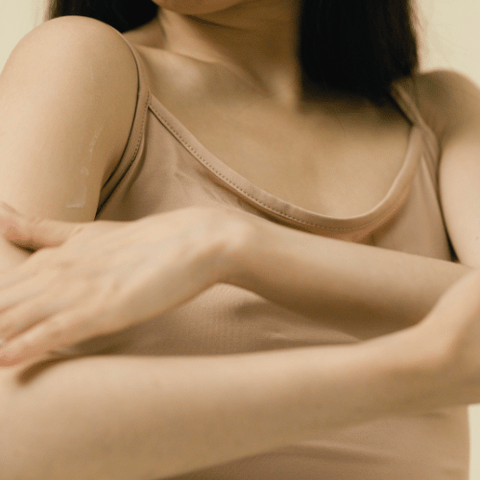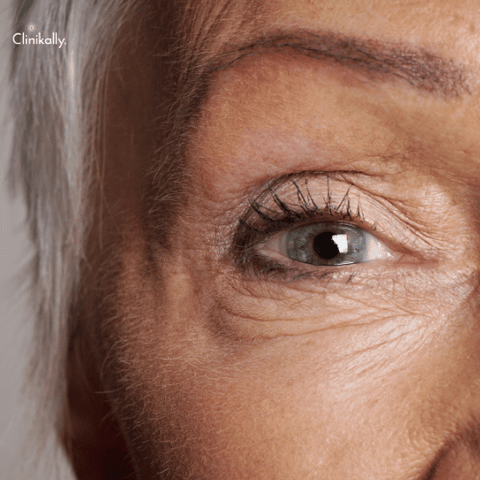Candlenut, also known as Aleurites moluccanus, is a tropical tree that is native to Southeast Asia and the Pacific Islands. The candlenut tree is highly valued for its many uses, including as a source of light, cooking oil, and medicinal purposes. However, it is the oil extracted from the nut of the candlenut tree that has caught the attention of the skincare industry in recent years.
Candlenut oil is a rich source of fatty acids, including oleic acid, linoleic acid, and palmitic acid, as well as antioxidants and vitamins A and E. These nutrients work together to provide numerous benefits for the skin, including hydration, anti-aging properties, and protection against environmental stressors.
In traditional medicine, candlenut has been used for centuries to treat a variety of ailments, including skin conditions such as eczema and psoriasis. Its anti-inflammatory properties make it an effective remedy for soothing and calming irritated skin.
As interest in natural and organic skincare has grown, so has the popularity of candlenut as a skincare ingredient. Today, you can find candlenut oil in a wide range of skincare products, from moisturizers and serums to hair care products.
In this article, we will take a closer look at candlenut and its many benefits for the skin and hair. We'll explore its traditional uses, the science behind its effectiveness, and offer tips on how to incorporate candlenut into your daily skincare routine. So, whether you're looking to improve the appearance of fine lines and wrinkles, soothe dry and irritated skin, or add shine and strength to your hair, candlenut just might be the natural remedy you've been searching for.
Exploring the Origins and Uses of Candlenut
Candlenut, also known as Aleurites moluccanus, is a tropical tree that has been cultivated for thousands of years throughout Southeast Asia and the Pacific Islands. The candlenut tree has been highly valued for its various uses, including as a source of light, cooking oil, and traditional medicine. Candlenut oil, extracted from the nut of the tree, has recently gained attention for its numerous skincare and hair care benefits. However, the history and traditional uses of candlenut go far beyond its modern-day applications. In this article, we will explore the origins and cultural significance of candlenut, its traditional uses in medicine and cooking, and how it has evolved into a powerful skincare ingredient.
Candlenut in Javanese Culture
In Javanese culture, candlenut has been an essential ingredient in various traditional rituals, cuisine, and beauty practices. For centuries, Javanese people have used candlenut oil in massage therapy and as a natural remedy for various skin and hair concerns. Additionally, the nuts have been a staple in local cuisine, providing a rich source of nutrients and flavor.
Traditional Medicine and Beauty Practices
Candlenut has been a part of traditional medicine in various Southeast Asian cultures, where it has been used to treat skin conditions, inflammation, and infections. The nuts have also been used as a source of natural oils in beauty and hair care practices, offering skin nourishment and revitalization.
Candlenut's Skincare Benefits

Candlenut oil has been touted for its remarkable skincare benefits, with its high concentration of fatty acids, antioxidants, and vitamins making it a potent natural remedy for a range of skin concerns. From hydration to anti-aging properties, candlenut oil has become a staple ingredient in many skincare products. In this article, we will delve deeper into the skincare benefits of candlenut oil, exploring its hydrating and moisturizing properties, its ability to improve skin elasticity and reduce the appearance of fine lines and wrinkles, and its effectiveness in soothing and calming irritated skin. We will also provide tips on how to incorporate candlenut oil into your skincare routine, so you can experience its powerful skincare benefits for yourself.
Skin Hydration and Barrier Function
The high fatty acid content in candlenut oil helps to maintain skin hydration and reinforce the skin barrier. These fatty acids, including linoleic and oleic acids, work to seal in moisture and protect the skin from environmental damage, resulting in a healthier, more resilient complexion.
Antioxidant Properties
Candlenut oil contains powerful antioxidants that help to neutralize free radicals, which are responsible for premature aging and cellular damage. By incorporating candlenut oil into your skincare routine, you can help to prevent oxidative stress and promote overall skin health.
Anti-Inflammatory and Anti-Aging Effects
The anti-inflammatory properties of candlenut oil make it an excellent ingredient for soothing irritated or inflamed skin. In addition, the oil's natural anti-aging benefits help to reduce the appearance of fine lines and wrinkles, promoting a more youthful and radiant complexion.
Hair Care and Nourishment
Candlenut oil is not only beneficial for your skin but also for your hair. The oil's rich fatty acid profile nourishes and moisturizes the hair, while its antioxidants protect the hair from environmental damage. Moreover, candlenut oil can help to reduce hair loss and promote hair growth by supporting a healthy scalp.
How to Incorporate Candlenut into Your Skincare Routine

If you're looking to incorporate more natural ingredients into your skincare routine, candlenut oil might just be the ingredient you're looking for. This versatile oil is packed with skin-loving nutrients that can improve skin hydration, reduce the signs of aging, and soothe irritated skin. But with so many skincare products on the market, it can be difficult to know where to start when it comes to incorporating candlenut oil into your routine. In this article, we will provide tips on how to use candlenut oil for optimal results, including which products to look for, how to apply them, and how often to use them. Whether you're a skincare newbie or a seasoned pro, incorporating candlenut oil into your routine can provide numerous benefits for your skin.
Candlenut Oil
Pure candlenut oil can be applied directly to the skin or hair as a moisturizer, massage oil, or treatment for various skin and hair concerns. To use candlenut oil on your face, simply warm a few drops in your hands and gently massage it into your skin. For hair care, apply the oil to your scalp and hair, focusing on the ends, and leave it in for at least 30 minutes before washing it out with a gentle shampoo.
Skincare Products with Candlenut
Many skincare products now incorporate candlenut oil as a key ingredient, thanks to its numerous skin benefits. These products can range from facial creams and serums to body lotions and lip balms. To maximize the benefits of candlenut, look for products that list candlenut oil as one of the primary ingredients.
DIY Candlenut Treatments
For a more hands-on approach, you can create your own DIY candlenut treatments at home. To make a nourishing face mask, combine candlenut oil with other skin-friendly ingredients like honey and yogurt, and apply the mixture to your face for 10-15 minutes before rinsing off with warm water. For a hair treatment, mix candlenut oil with coconut oil and massage the blend into your scalp and hair, then wrap your hair in a warm towel and let it sit for an hour before washing.
Precautions and Safety Tips
While candlenut oil is a natural and powerful ingredient that can offer numerous benefits for your skin and hair, it's important to take precautions and use it safely. Like any natural ingredient, candlenut oil can cause adverse reactions in some individuals. In this article, we will explore some safety tips and precautions to keep in mind when using candlenut oil or products containing candlenut. We'll also discuss potential side effects, how to perform a patch test, and when to avoid using candlenut oil altogether. By following these safety tips, you can use candlenut oil with confidence and enjoy its many benefits without any negative consequences.
Nut Allergy Considerations
If you have a nut allergy, it's important to patch-test candlenut oil on a small area of your skin before using it on your face or body. Although reactions to candlenut oil are rare, it's better to err on the side of caution to avoid any potential allergic reactions.
Proper Storage and Use
To ensure the effectiveness and longevity of your candlenut oil or products containing candlenut, store them in a cool, dark place away from direct sunlight. Additionally, make sure to use clean hands or a dropper when handling the oil to prevent contamination.
Conclusion: Harnessing the Power of Candlenut for Beautiful Skin and Hair

In addition to its skincare benefits, candlenut is also highly effective for hair care. Its rich fatty acid content makes it a nourishing treatment for dry, damaged hair, and its antioxidant properties can help protect hair from environmental stressors. By using candlenut oil as a hair mask or incorporating it into your regular hair care routine, you can strengthen and revitalize your locks.
It's important to note that while candlenut oil has numerous benefits, it's always best to patch test new products on a small area of skin to ensure that you don't experience any adverse reactions. Additionally, it's essential to source high-quality, pure candlenut oil to ensure that you're getting the full range of benefits that this powerful ingredient has to offer.
Overall, candlenut is a natural ingredient that is both effective and versatile, making it a great addition to any skincare or hair care routine. By harnessing the power of this traditional remedy, you can achieve beautiful, healthy skin and hair without relying on harsh chemicals or synthetic ingredients.
















